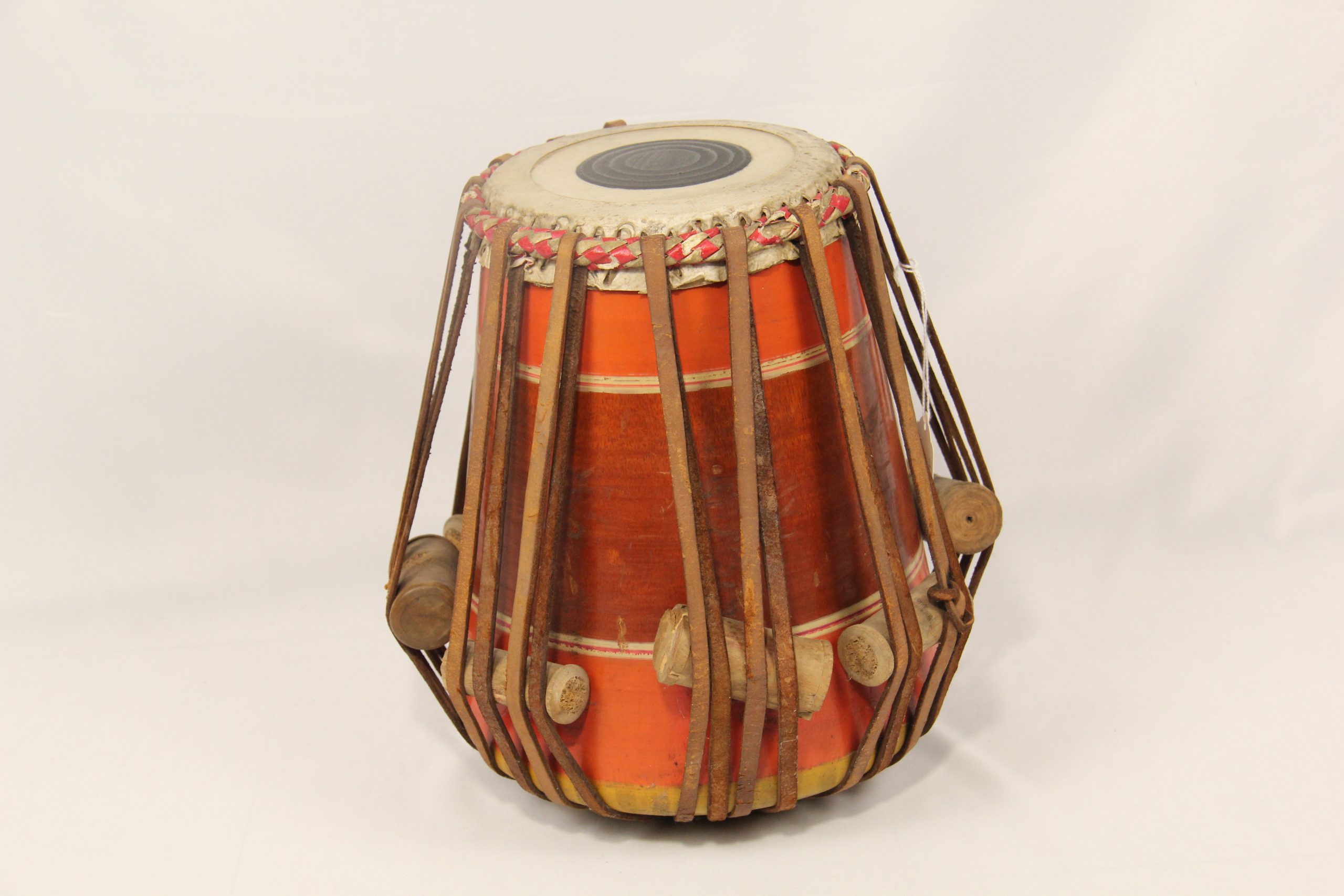Tabla
Details
- Origin: Delhi, India
- Date: 18th-20th Century
- Collection: DHB 113A & DHB 113B
Description
A pair of kettle drums: the taller “dayan” (DHB 113A) and shorter “bayan” (DHB 113B). The dayan is made of heavy timber and rubber, with a hollow shell, and on the outside are fabric attachments and rawhide straps, with circular wooden wedges underneath them for tuning purposes. It is 5.5 inches in diameter, and has a sticker on the outside reading “KARTAR/MUSIC HOUSE/CHARNRI BAZAR, DELHI-6.” The bayan has a hollow body made of copper, rawhide straps, fabric, rubber, and wood in a bulbous shape. On top of both drums are multi-membranous goatskin hides stretched across the sole drum openings. In the middle of both hides is a black paste made of rice flour and iron filings called “shiyai,” designed to give each drum a unique pitch.
This tabla set was seemingly acquired from the Kartar Music House in Chawri Bazaar, established in 1948 as a musical instrument dealership that specializes in tablas, although exactly who created it is unknown.
Modern tablas are said to have been invented around 1738 by a drummer named Amir Khusru in northern India, but before that the traditional drum pair was a part of lower-caste folk music in Indian society. It wasn’t until a new form of singing called “khayal” rose to prominence during the reign of Mohammad Shah Rangeele in the 18th century that tablas achieved Hindustani classical significance. The original style of playing was called “dilli baj” or “dilli gharana,” and originated in Sudhar Khan’s Delhi school before his disciples spread throughout northern India, creating new styles. Khayal and its tabla accompaniment are the current basis for Indian classical music, with the tabla being the most widely played instruments in northern India.
The ancestors of tablas were metal drums designed for Arabic Muslim military expeditions, later becoming more egg-shaped for easier transportation via camel or horse. Tablas derive their name from the Arabic “tabl,” which means “upward-facing, flat-faced instrument.” Some argue that it is actually derived from the Latin word “tabula.” The word “tabl” grew into a generic prefix for Middle Eastern percussion instruments regardless of shape.
Sources
“Construction & Playing.” India Instruments. Accessed June 15, 2022. https://www.india-instruments.com/construction.html.
“Indian Drums and Percussion.” Old Delhi Music. Shopify, 2010. https://olddelhimusic.com/collections/indian-drums-and-percussion.
“Kartar Music House.” Tradeindia. Accessed June 15, 2022. https://www.tradeindia.com/kartar-music-house-1121959/.
Phinney, Eric. “Tabla.” Bloomingdale School of Music, December 14, 2021. https://www.bsmny.org/instrument-discovery/tabla/#:~:text=Whether%20that%20is%20true%20or,style%20of%20music%20called%20Khayal.









